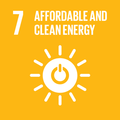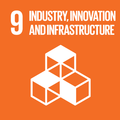The Pearl River Tower, located in the city of Guangzhou, China, has integrated wind power generation and is one of the world’s most energy-efficient high-rise structures.
The 309-meter Pearl River Tower’s sculpted body directs wind to a pair of large openings through the building, where wind turbines generate energy for the building. Other integrated sustainable features include integrated solar panels, a double skin thermal insulation curtain wall, under-floor ventilation, and a priority on maximizing daylight.
Pearl River Tower shows the shape of the 21st century – a high-performance design that integrates architecture, engineering and technology to create a highly sustainable super-tall building.
Richard Tomlinson – Partner, Skidmore, Owings & Merrill.
Together, renewable energy generation and energy efficiency measures decrease the amount of electrical power required to operate the building’s cooling, heating, dehumidification, ventilation and lighting systems. At the time of completion, the full implementation of Pearl River Tower’s sustainability strategies resulted in energy savings of approximately 50% relative to China’s sustainable building code for commercial buildings, according to the company.
Why you should care
As urbanization increases and cities grow worldwide, the design and sustainability of buildings is increasingly important. In USA, for instance, commercial buildings account for nearly 20% of the country’s energy consumption, with more than half the energy use going toward heating and lighting. Energy efficiency coupled with onsite renewable energy generation reduces the need for electricity from fossil-fuel power plants, helping to lower greenhouse gas emissions.
How the Global Goals are addressed

Affordable and Clean Energy
The tower’s sculpted body directs wind to a pair of openings at its mechanical floors, where traveling winds drives turbines, which generate energy for the building.

Industry, Innovation, and Infrastructure
Pearl River Tower’s efficient design offers increased productivity and revenue potential resulting from the elimination of fan rooms and the reduction of airshaft sizes.

Climate Action
The significant energy savings built into the Pearl River Tower, as well as on-site energy generation, help to lower the CO2 footprint of the skyscraper.


